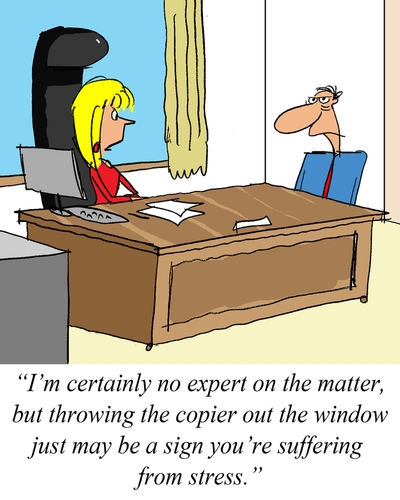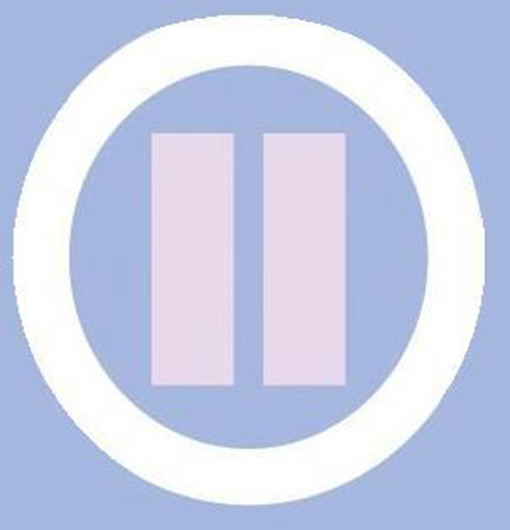Workplace stress. It seems to be a fact of life for most people. Surprisingly, even though 60% of people describe work as their biggest source of stress, the American Psychological Association found that the overall American stress level is declining. It still remains elevated, however, well above what’s considered healthy.
In today’s fast paced, quickly changing workplace, many people will readily tell you that, despite their best efforts, work still causes a significant amount of stress. They’ll also probably tell you they don’t have time to get sick. So what’s a stressed out super achiever to do?
You can’t work well if you don’t feel well. Even if you “suck it up” and come to work feeling sub-par, you’re not going to perform at your usual level. Presenteeism -being at work but underperforming- combined with absenteeism, costs US companies $227 billion annually in lost productivity. With stress playing a role in as much as 80% of all illness, it’s no surprise that many companies now teach their teams how to effectively manage stress.
Companies like Google, General Mills, and Aetna offer employee wellness programs teaching stress management skills to their staff. Many CEOs also know the personal benefits of incorporating stress management into their demanding schedules. SalesForce.com’s Marc Benioff, Def Jams’ Russell Simmons, and Bridge Water Associates’ Ray Dalio make meditation, an excellent stress buster, part of their daily routine.
Developing new skills to help you and your team perform better might sound like a good idea but, for a lot of people, practically it’s just one more thing added to an already overflowing plate. More stress. Who needs that?
If this sounds familiar, you might prefer to simply work with yourself where you are. Rather than finding time to learn a new skill, use a new strategy. It can offer many of the same benefits without requiring extra time or energy.
Everyone is wired with the same basic stress response. When confronted with a stressor, the “fight, flight or freeze” response happens naturally. Recognizing and reframing your automatic reaction can help you easily select coping mechanisms in the moment.
Workplace Stress Management 2.0
Fight response 2.0
Getting into a physical or verbal altercation might sometimes feel like a tempting way to deal with frustration, but you’ll probably rack up a new slew of challenges if you choose that path. Instead, look for more appropriate opportunities to channel the urge to fight, especially at work.
Professionally “fighting” a workplace stressor simply means appropriately confronting it rather than resisting, ignoring, or avoiding it. For example, you could have a conversation with a co-worker or send an e-mail addressing a situation. Doing this can help overcome feelings of powerlessness. Feeling disempowered often intensifies stress. Finding empowering solutions offers an effective way to reduce it.
Flight Response 2.0
Instead of fleeing from an office stressor in the traditional sense, try finding a more practical alternative. For example, instead of turning on your heels and running to the nearest exit, you can “flee” workplace stress by taking a quiet lunch time walk. Or, if you find yourself feeling overly stressed while working at your desk, standing up to stretch or taking a quick coffee break could offer a sense of escape.
While some people prefer physical forms of flight, others prefer mental escapes. In that case, closing your eyes at your desk and taking a 60 second virtual vacation to a soothing location might serve you well. Writing in a journal also offers a nice feeling of mental and emotional release.
Freeze Response 2.0
Another less talked about reaction to stress is the freeze response. Stress hormones flooding the brain cause some people to have a mental “deer in the headlights” reaction. They shutdown. In this case, taking periodic “pauses for wellness™”, especially during high stress times, can prove helpful. This allows you an opportunity to “freeze” at convenient and appropriate times during your work day.
Pausing a minute or so each hour to focus on your breath can work wonders for workplace stress. Slow deep breaths help flip your body out of the stress response mode and into the relaxation response.
Once you identify your stress response style, then identify one or two appealing techniques, add them to your workplace wellness toolkit. Having your personal wellness tools identified in advance makes it easier for you to use them when you’re in the midst of a major stressor. You won’t have to think about it. Who couldn’t use a helpful “no-brainer” in the midst of an overly demanding day?
Be well,
Dr. Donna
© 2016 Donna L. Hamilton, MD
- 10 Quick, Easy Holiday Self-Care Tips - December 15, 2017
- Health Benefits of Kindness and Compassion - June 3, 2017
- Why Self-Care is Good for Your Health - May 10, 2017






